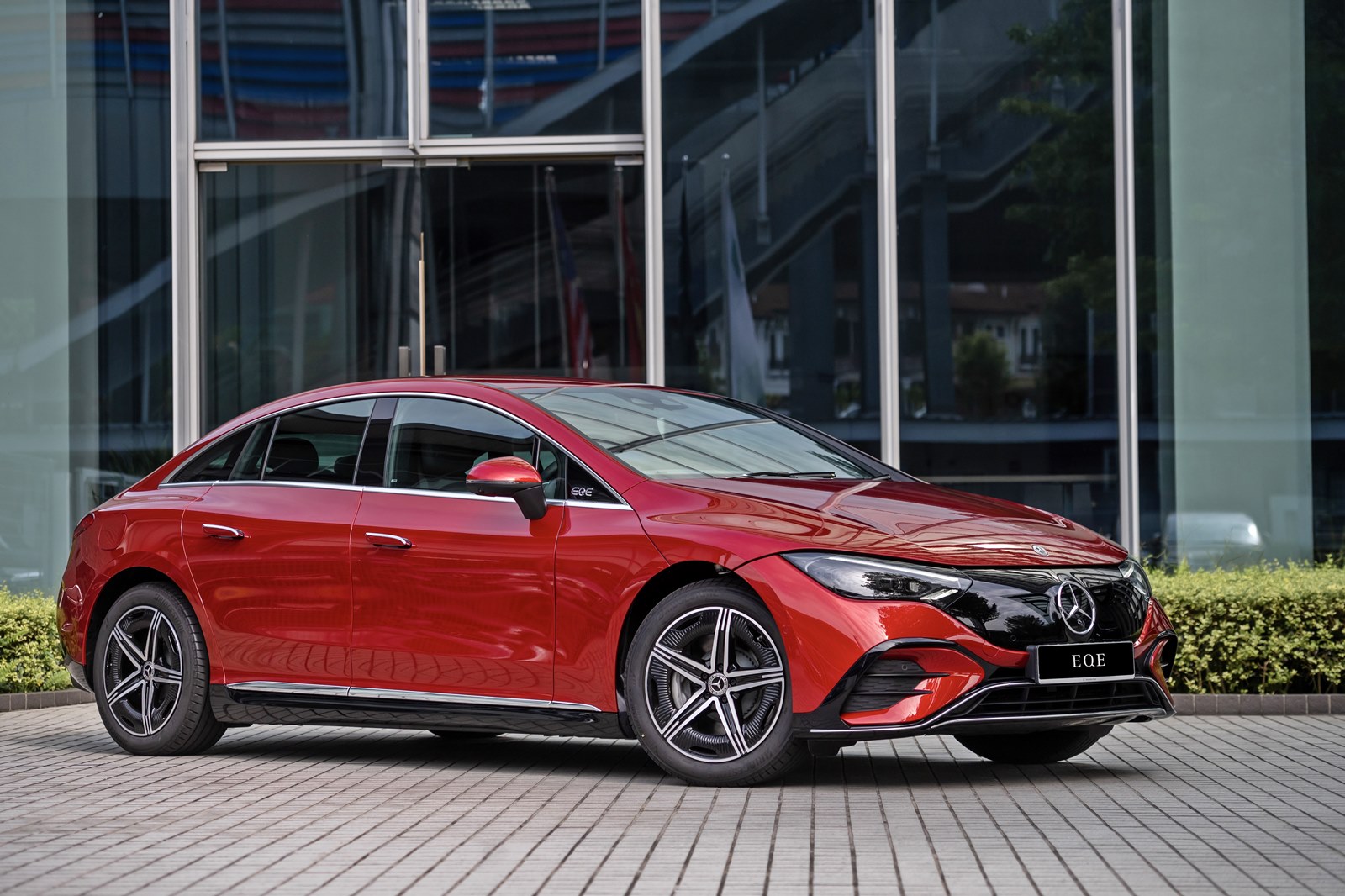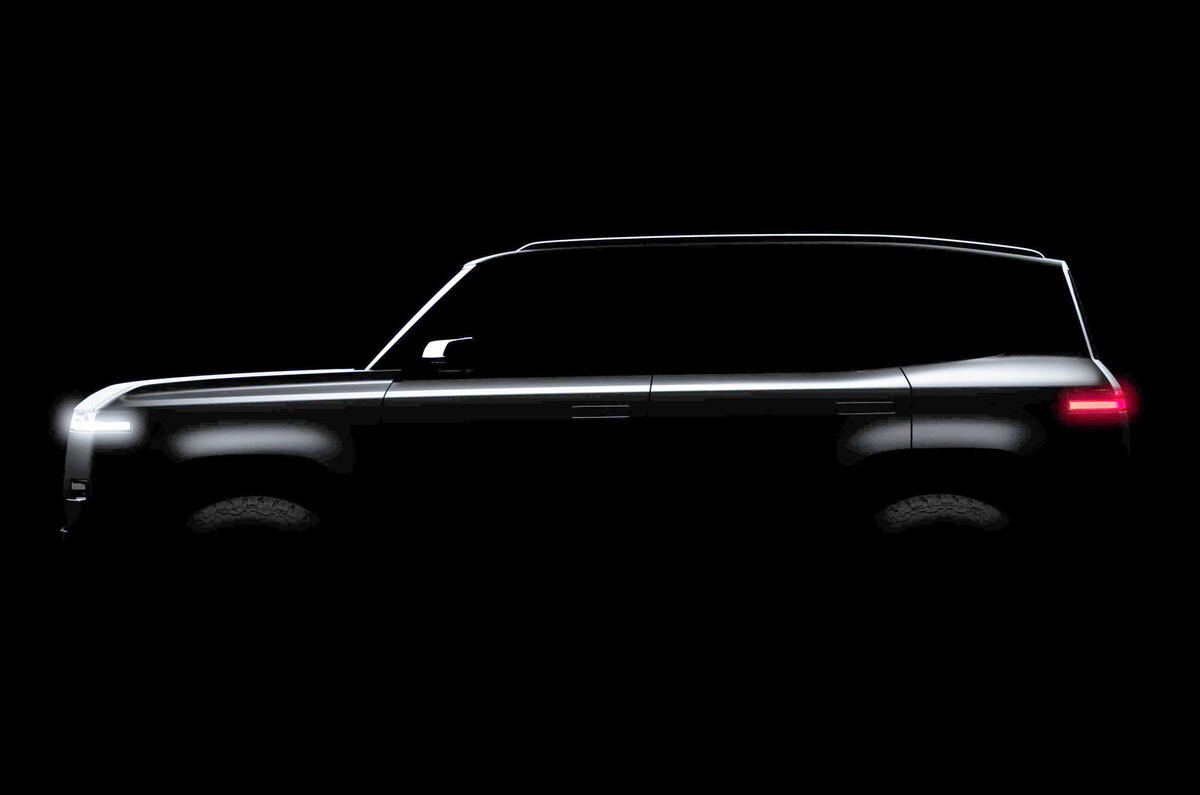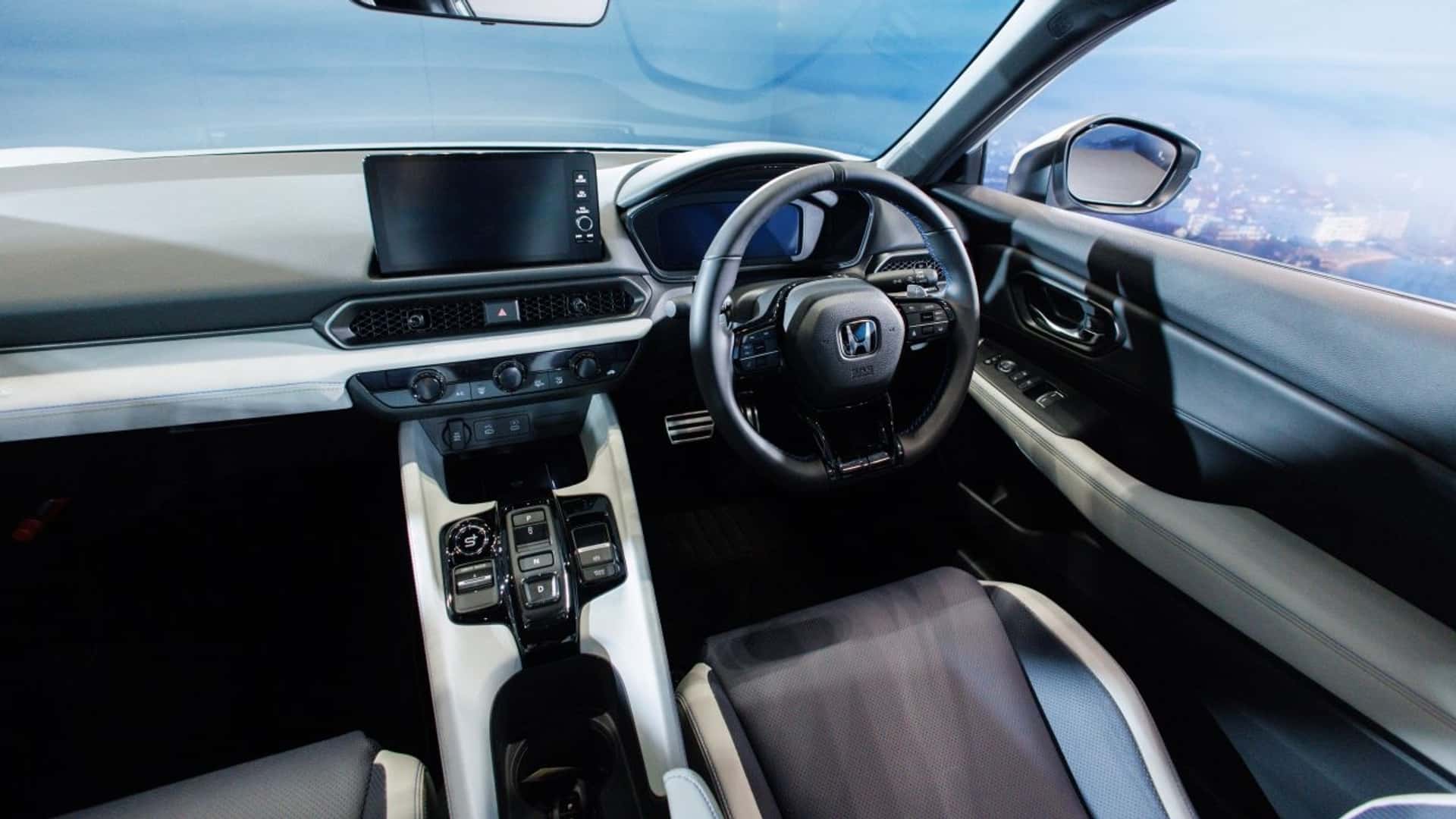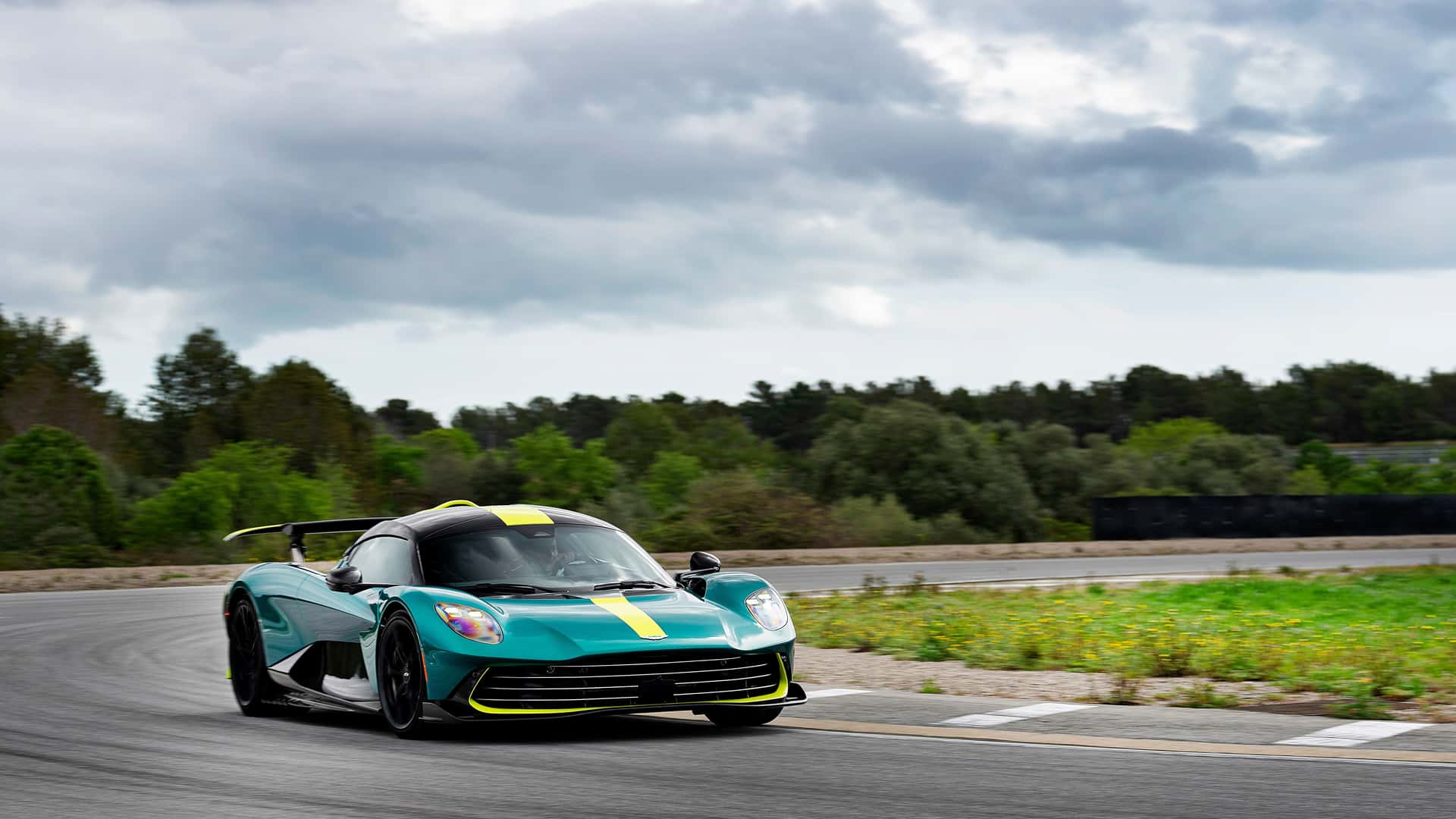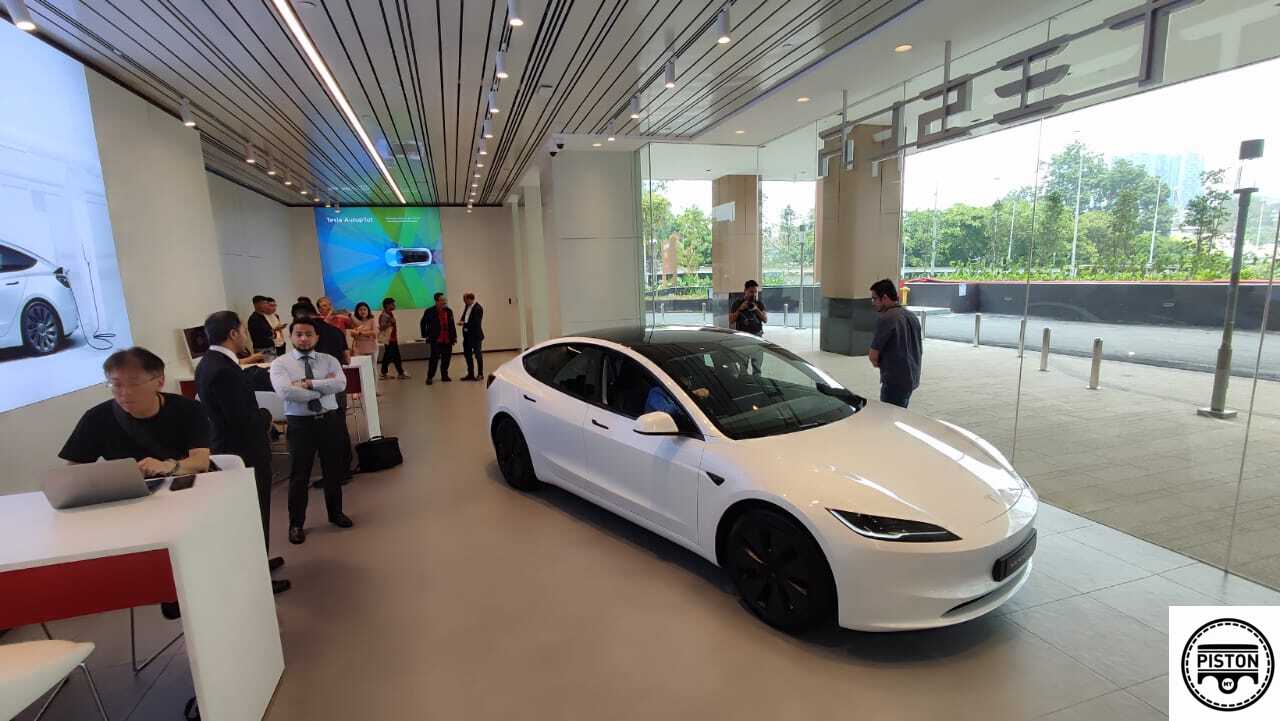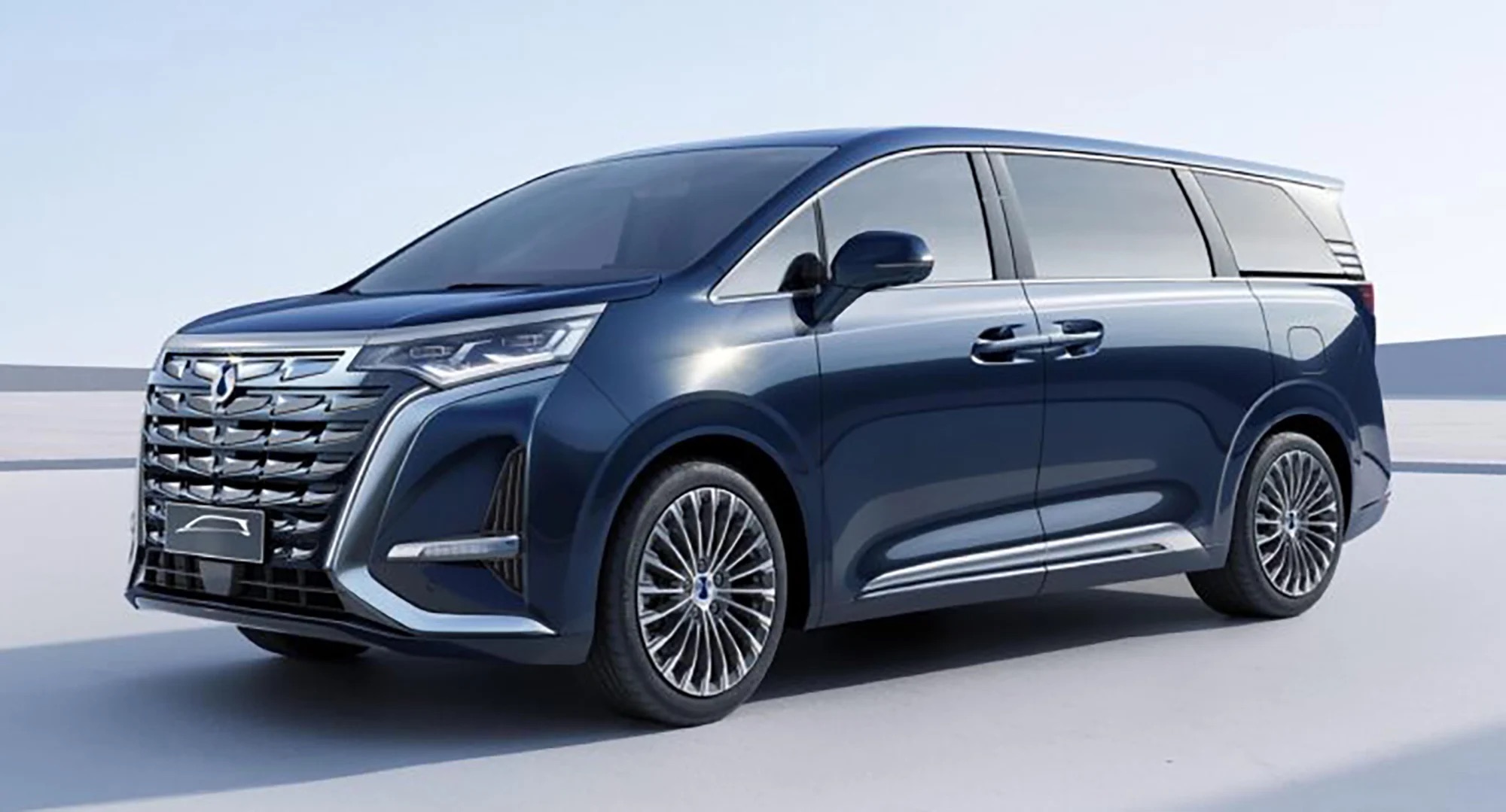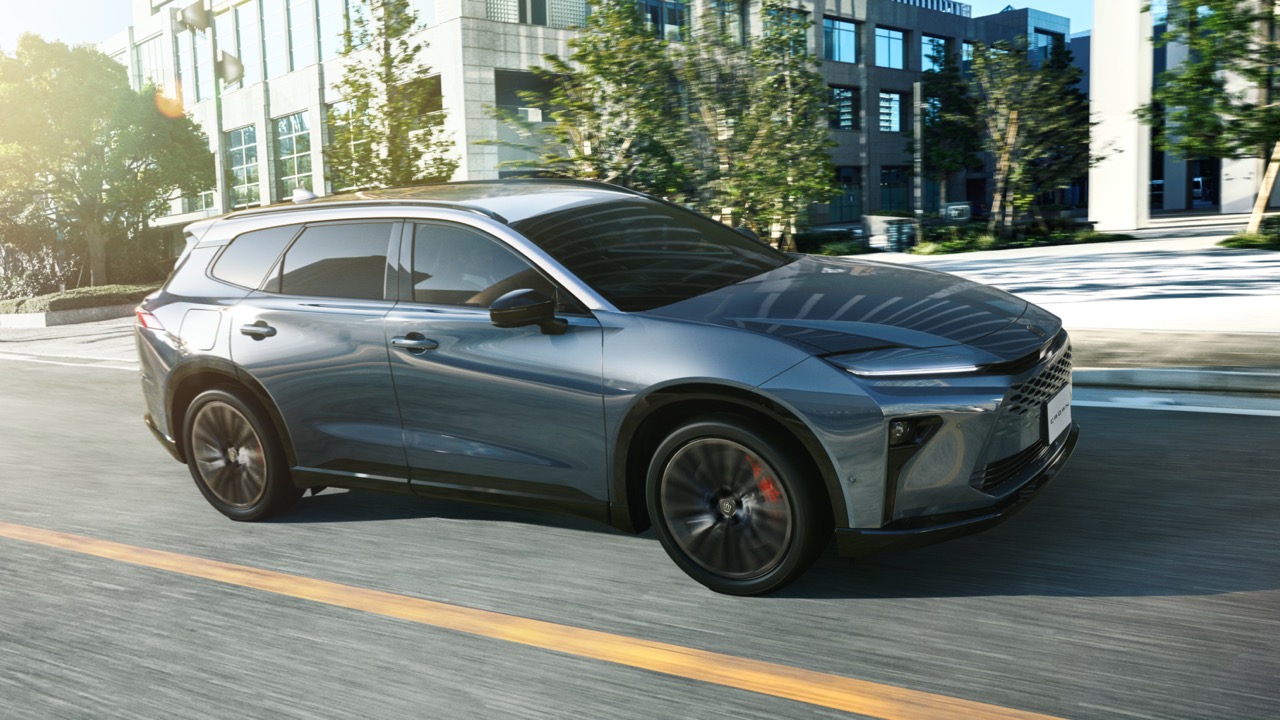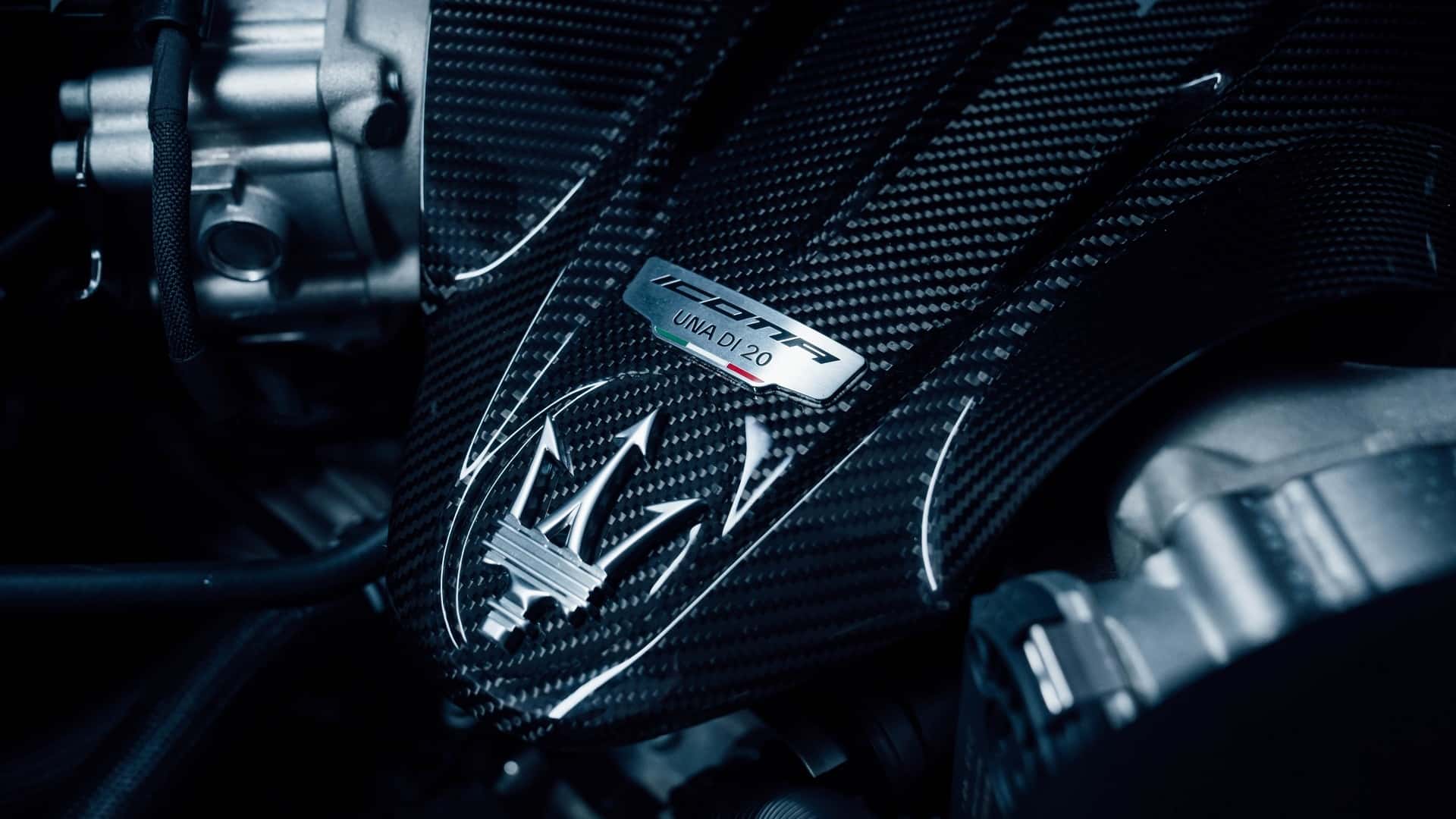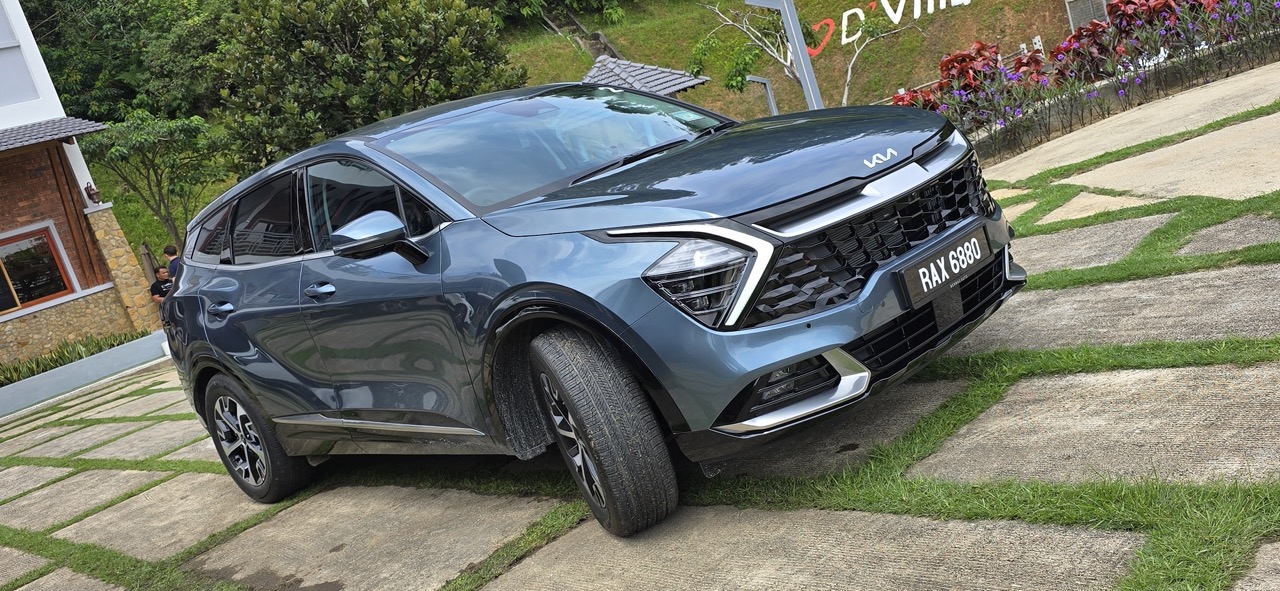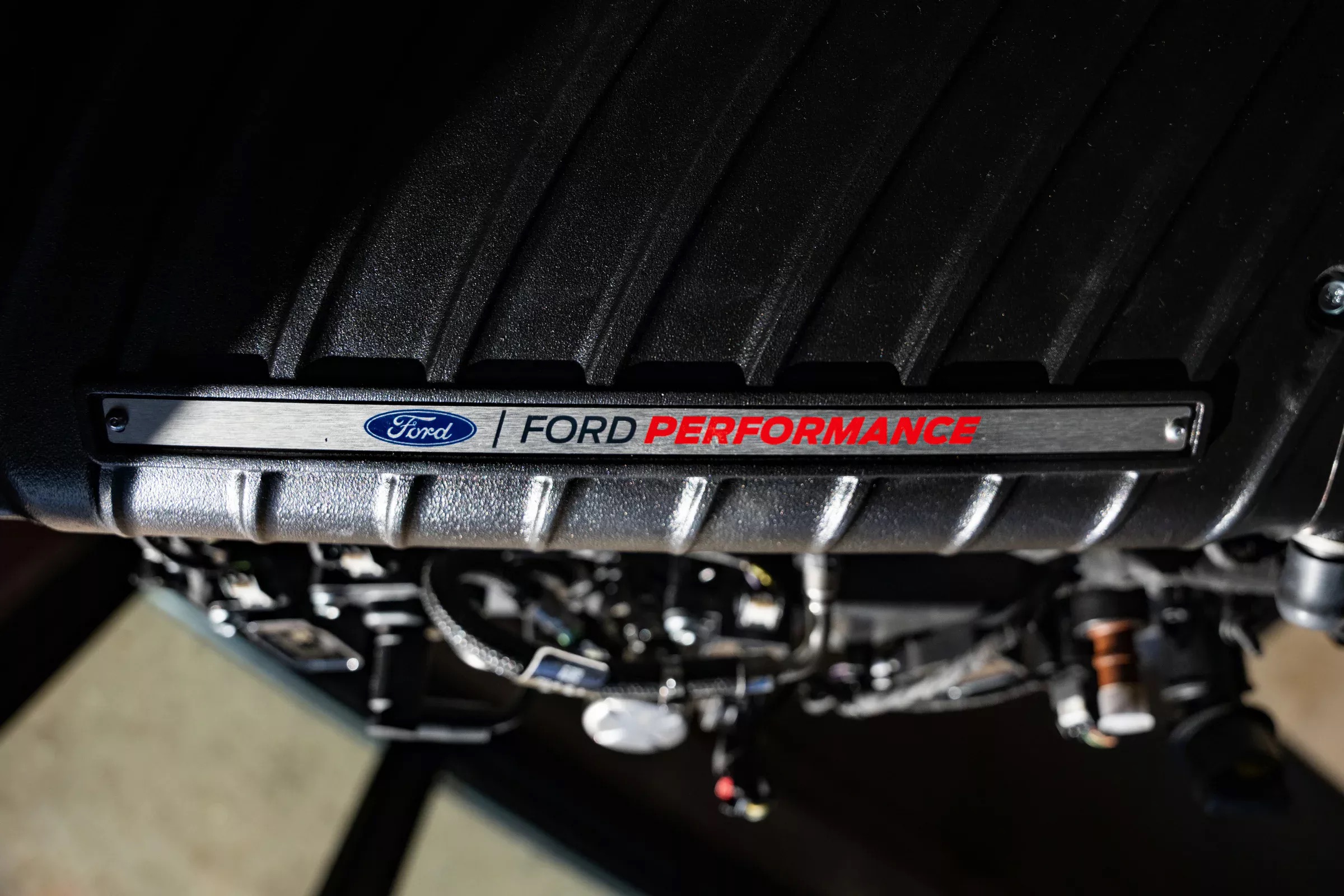Mercedes-Benz Malaysia today launched the Mercedes-Benz EQE, which joins the EQA, EQB, EQC and EQS in the all-electric Mercedes-EQ range in Malaysia. Priced from RM419,888 with tax exemption, the EQE sedan looks like a scaled-down version of the EQS and is essentially the ‘E-Class’ of the Mercedes-EQ range. It is thus positioned as the business sedan of the future.
As with the carmaker’s other EV models, the EQE 350+ uses EVA2 architecture which is the first of two platforms for its EV models (the other being the Mercedes-Benz Modular Architecture to be used later on).
Sleeker design language
With the Mercedes-EQ models (at least for the sedans), there is a marked departure from the formal and upright style that has been used for decades. The forms are sleeker with the design language which the carmaker calls ‘sensual purity’. This is not only for aesthetic progression but more importantly for having the best possible aerodynamic efficiency, vital for EVs.
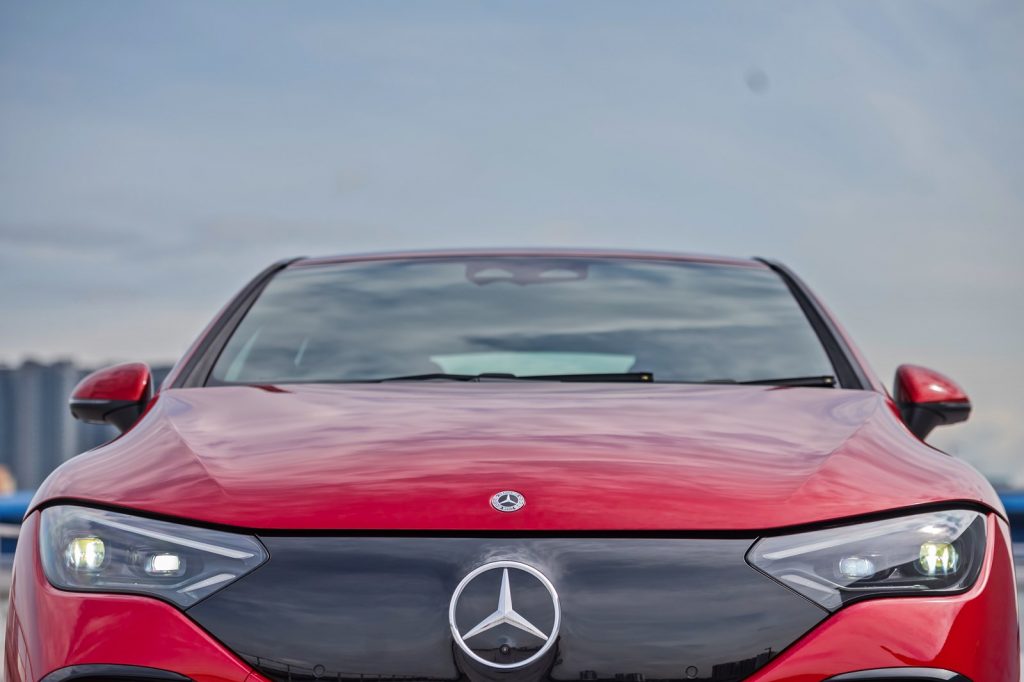
With aerodynamics prioritized, the shape is very clean and flowing, the front end having a closed panel since airflow in not required through the traditional grille. There is still the recognizable ‘face’ though it is clear that evolution is taking place in Mercedes design.
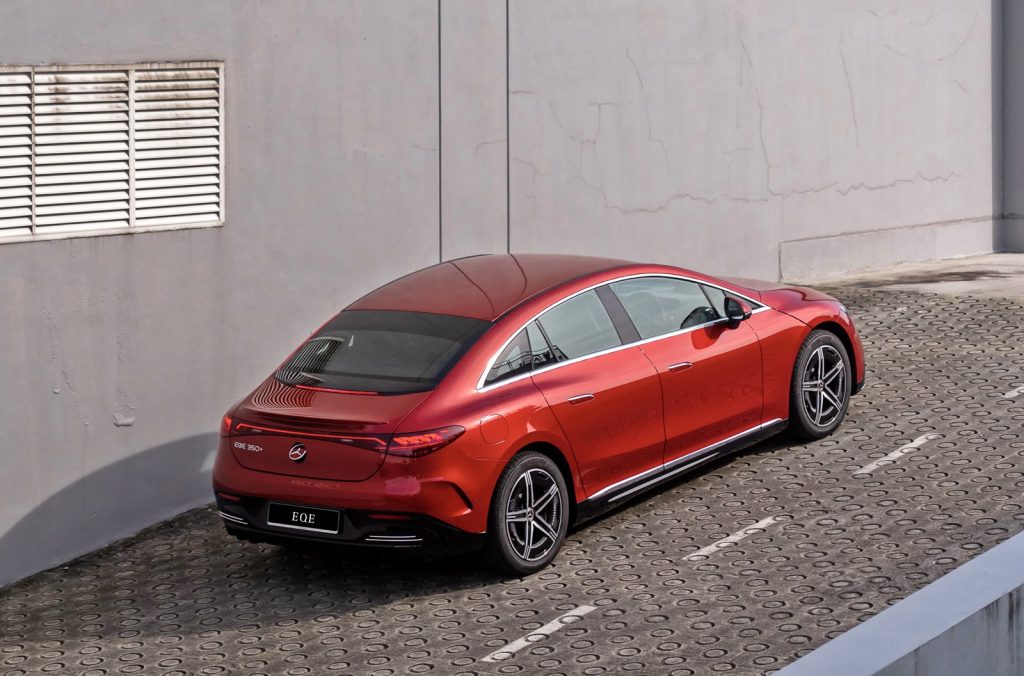
While the EQS has a dominating presence with its larger dimensions, the EQE appears better proportioned with its overall length of 4946 mm which is 180 mm shorter while the wheelbase is 90 mm less at 3120 mm. Compared to the latest E-Class, the EQE occupies an almost similar footprint though it has additional width.
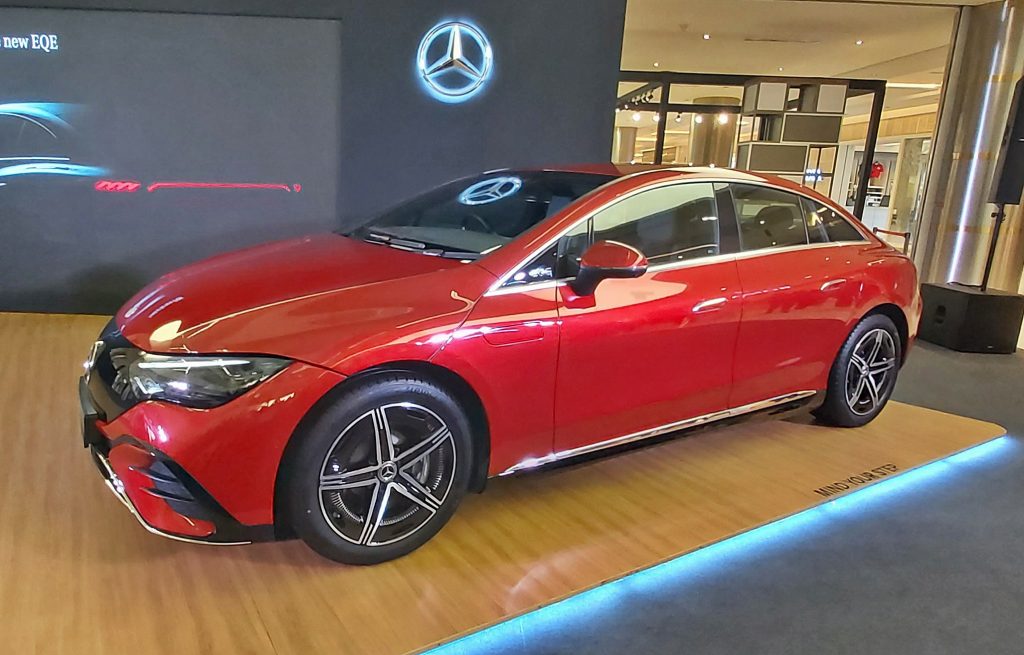
Single motor, rear-wheel drive
The EQE 350+ version comes with rear-wheel drive and a single motor generating a maximum output of 292 ps/565 Nm. The motor on the rear axle is particularly powerful due to its 6-phase design having 2 windings with 3 phases each. Acceleration time from 0 to 100 km/h is claimed to be 6.4 seconds for the 2,355 kg car, with a top speed of 210 km/h.
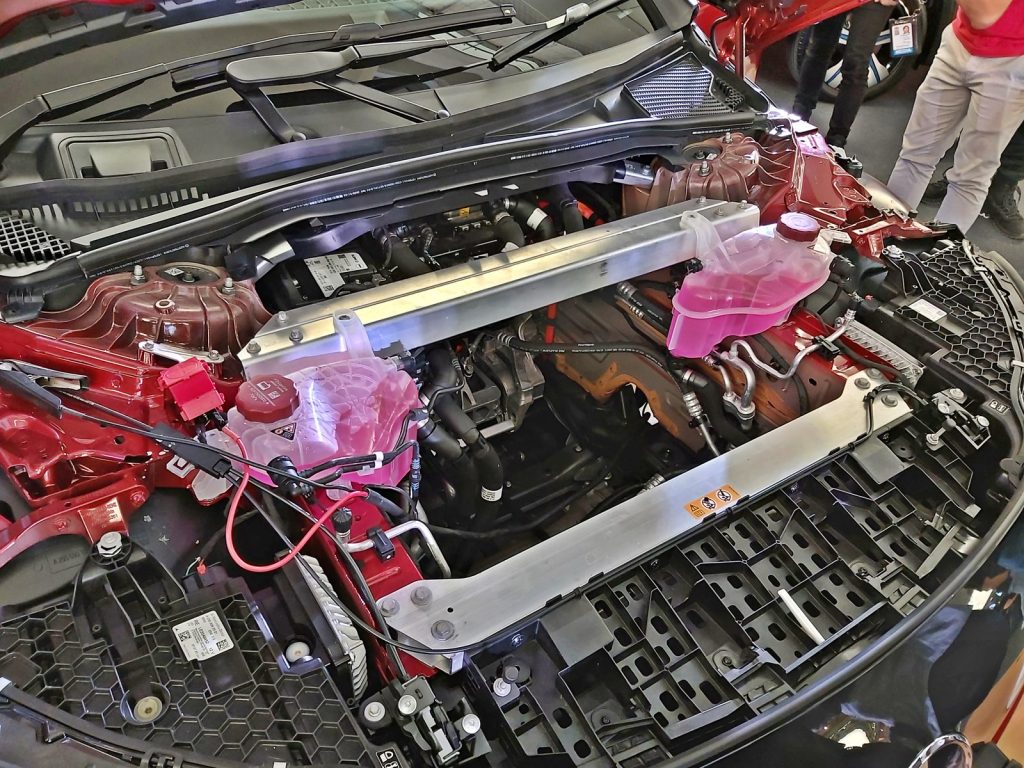
A large-capacity 90.6 kWh lithium-ion battery pack provides a claimed range of between 587 kms and 669 kms. As for recharging time, depending on the charging station, the time can be 32 minutes from 10% to 80% at a DC fast-charge station, or 8.25 hours with an AC home charger.
Consistently high performance and multiple accelerations without a drop in power characterize the EQE’s drive philosophy. This includes a sophisticated thermal concept and several variants of energy recovery by means of recuperation in this process. This helps extend range even while the car is being driven.
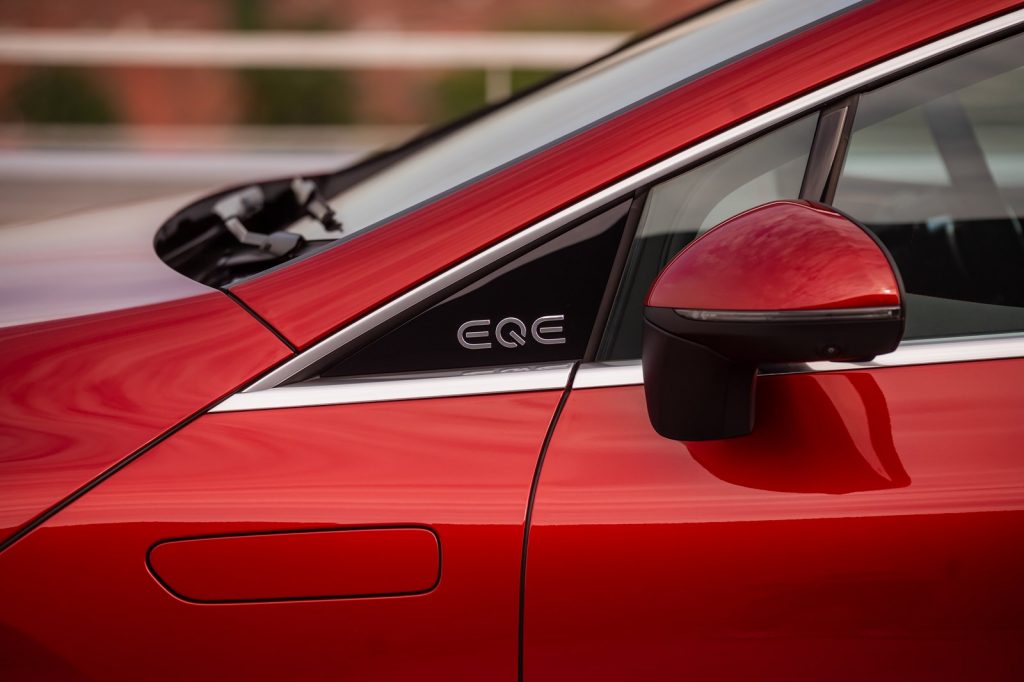

Avant garde approach to interior
The EVA2 architecture has given the Mercedes-Benz interior designers new opportunities to create an avant-garde cockpit. The dashboard surface, covered with little stars, is flanked by turbine vents with a large MBUX display panel in the middle. The theme is ‘hyperanalogue’ through the contrast between high-tech precision mechanics and digital, glass display world.
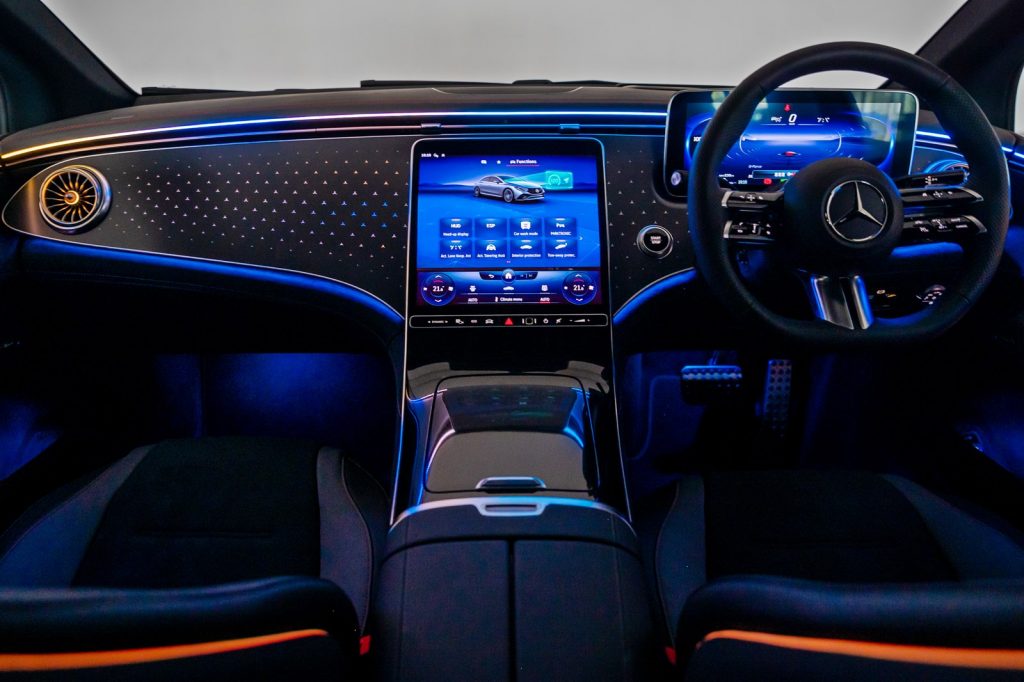
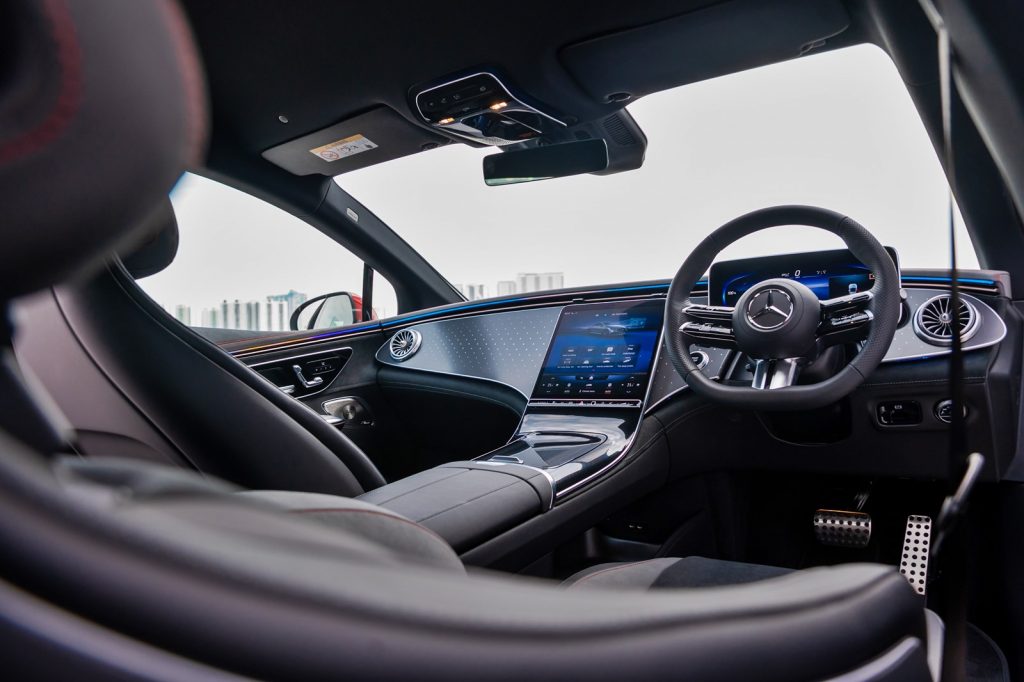
Like the EQS, the MBUX is the latest generation and has software with a control and display concept which completely adapts to its user and makes personalised suggestions for numerous infotainment, comfort and vehicle functions. With the zero-layer design, the user does not have to scroll through submenus or give voice commands. The most important applications are offered situationally and contextually on the top level in the field of view. This reduces interaction time, allowing the driver to remain more focussed on the road ahead.
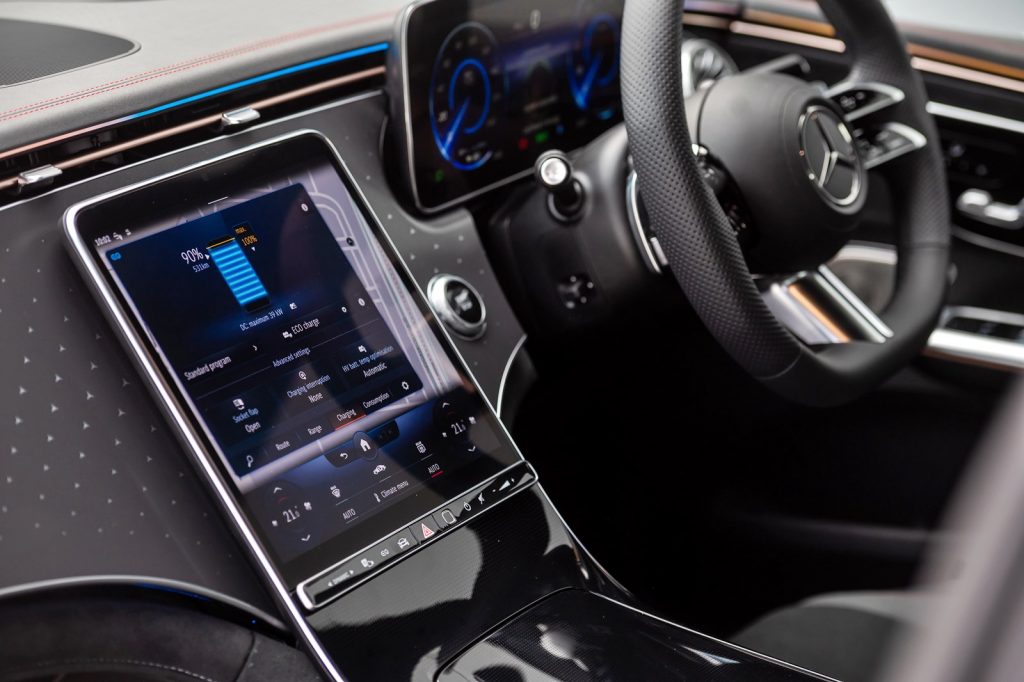
Navigation with Electric Intelligence plans the fastest and most convenient route, based on numerous factors and reacts dynamically to traffic jams or a change in driving style, for example. This includes a visualisation in the MBUX infotainment system as to whether the available battery capacity is sufficient to return to the starting point without charging.
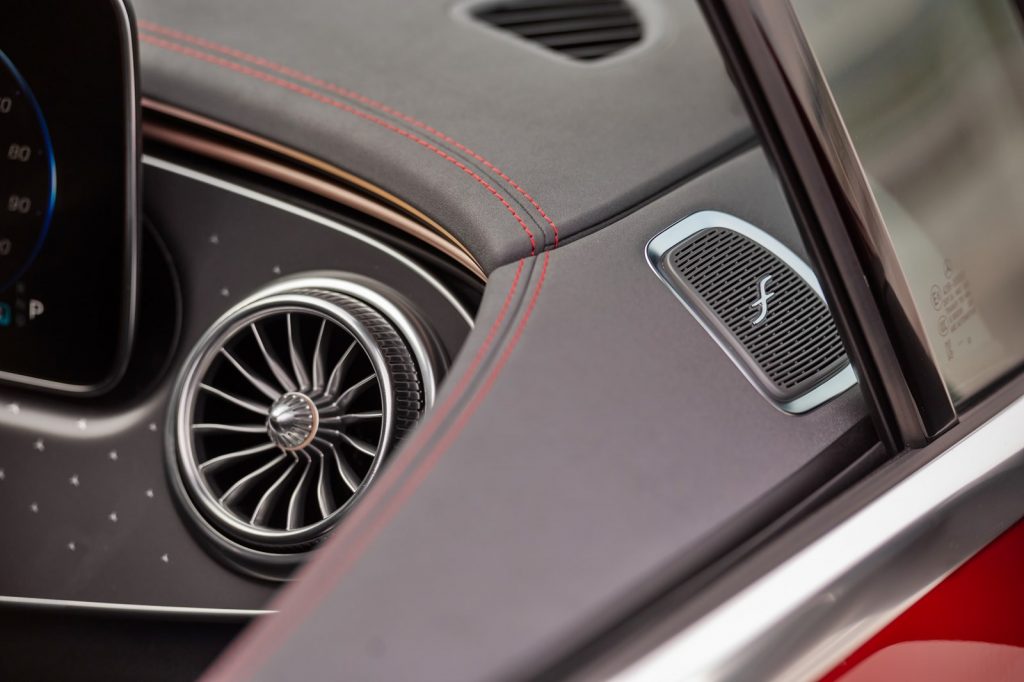
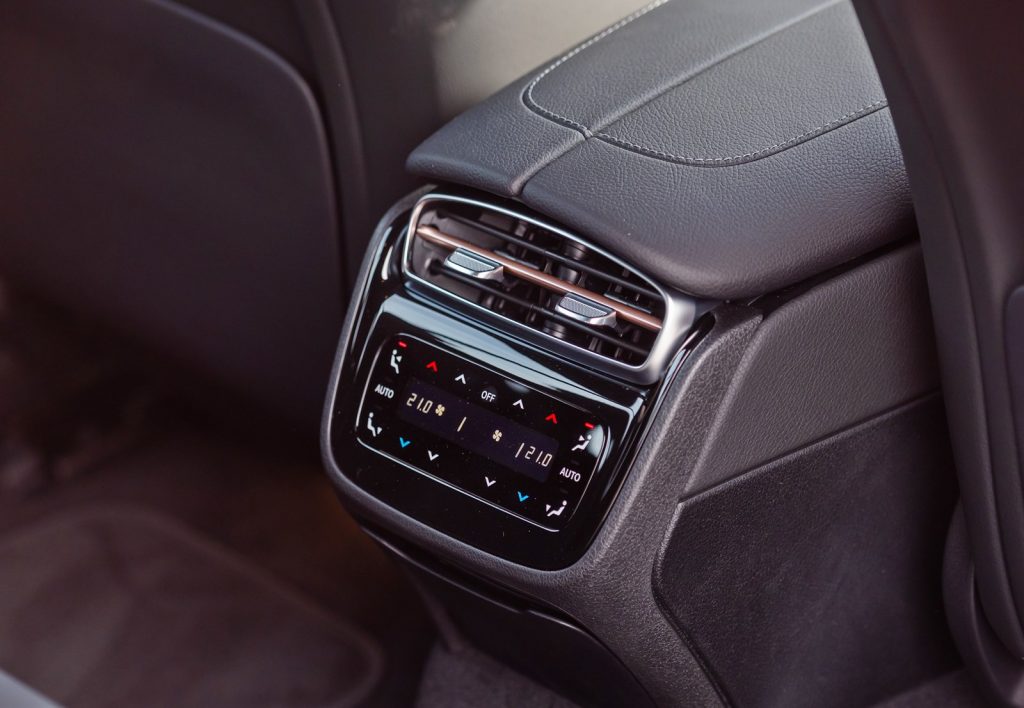
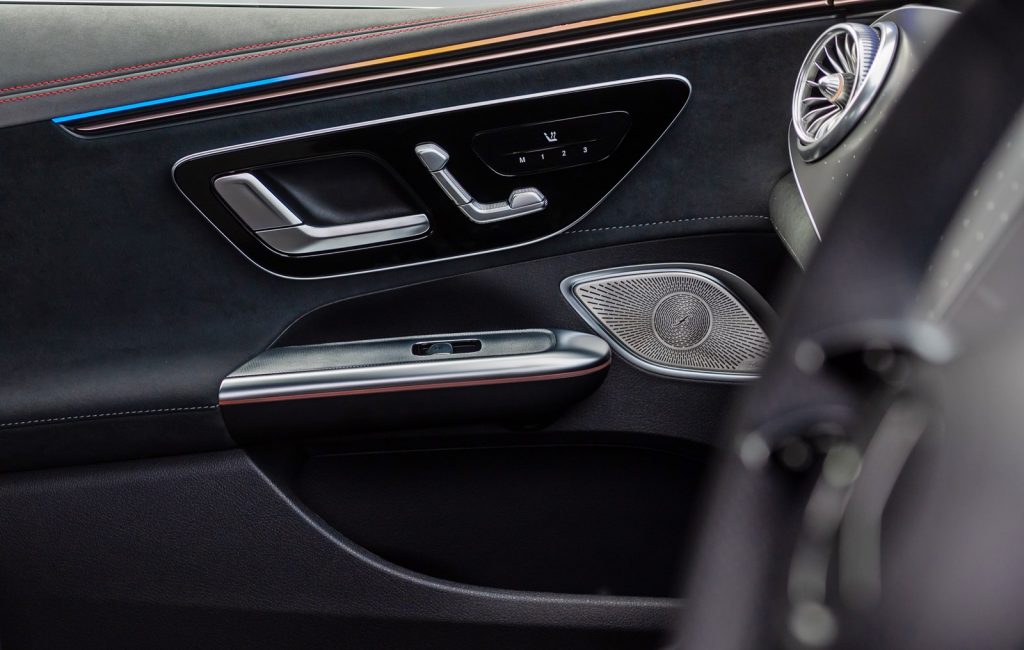
The standard Burmester surround sound system comes with two soundscapes – Silver Waves Vivid Flux and Roaring Pulse. Silver Waves is a sensuous and clean sound, while Vivid Flux is crystalline, synthetic yet humanly warm sound created for EV enthusiasts. For those who want something reminiscent of powerful machines, there is also the Roaring Pulse experience with its sonorous and extroverted sound.
Being a model in the luxury class, the EQE 350+ would already have NVH (noise, vibration and harshness) suppressed to very low levels. Furthermore, being electrically powered also reduces mechanical noise levels. Nevertheless, the engineers have still added insulation in areas around the drivetrains and insert acoustic foam into many carriers.
Passive and active safety
The fact that the EQE 350+ is based on an all-electric architecture has opened up new design possibilities for its safety concept. It means, for example, that a favourable location in the underbody can be chosen for the installation of the battery, with better protection during crashes. And without the mass of a combustion engine with its crankcase, the behaviour in a frontal crash can also be modelled in a better way.
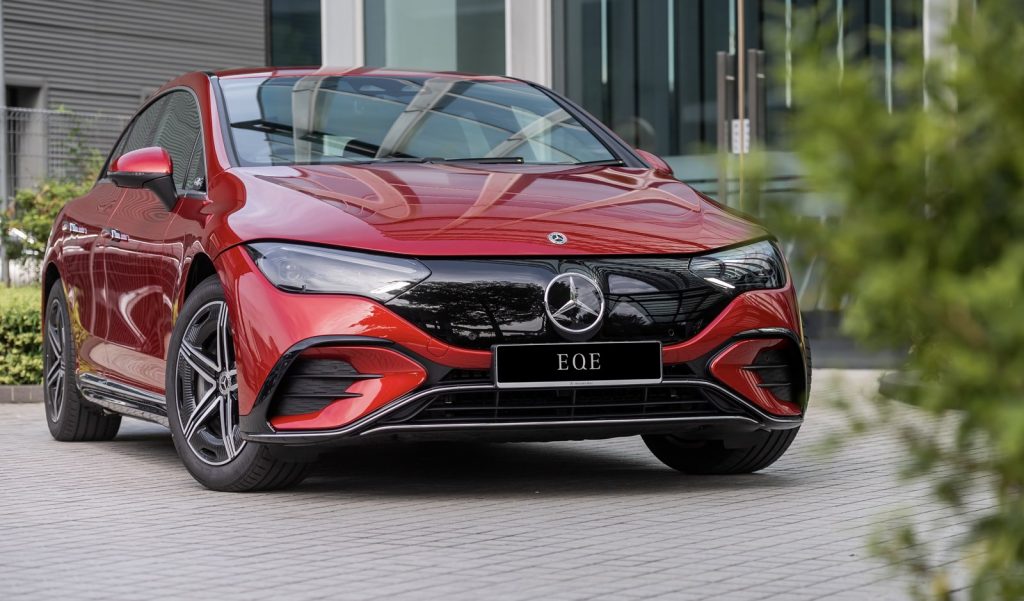
As with every Mercedes-Benz models, there is a rigid passenger cell encircling the cabin with special deformation zones to absorb or dissipate impact forces before they can cause harm to the occupants. PRE-SAFE, which is has used for a long time, is an accident sensing developed by Mercedes-Benz which prepares the occupant compartment by optimizing passenger safety in the moments preceding a collision or single-car crash, including a rollover event.
These days, manufacturers don’t just install systems to prevent accidents but make the active system assist the driver in being aware and avoid accidents. In the EQE 350+, there is the Driving Assistance Plus package that includes systems such as Active Distance DISTRONIC, Active Stop-and Go Assist, Active Steering Assist with Hands-off warning and Active Lane Keeping Assist.
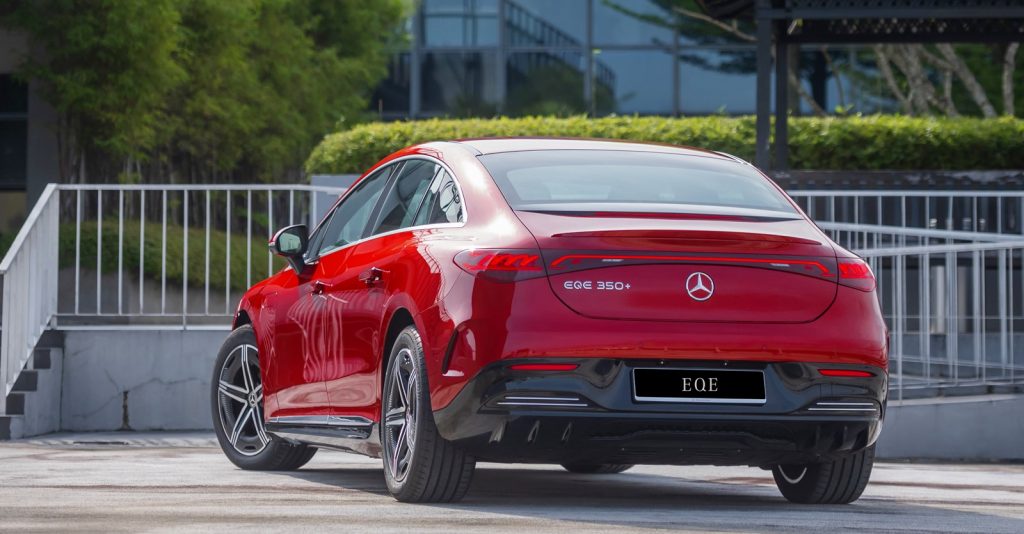
Local assembly in future
With the government offering extended tax exemption to those companies which decided to assemble their EVs locally, Mercedes-Benz Malaysia is now making plans to do so in the next few years. To enjoy the exemption which will enable them to offer their models at lower retail prices, they would have to start assembling before the end of 2025.
Assembling electrified models, ie the hybrid models, earlier took many years of preparation at the Mercedes-Benz Malaysia plant in Pekan, Pahang. Issues such as safe handling of the high-voltage systems had to be fully covered before assembly could be allowed to start. Now that such safety matters have already been set, the transition to battery electric vehicles can take place faster. Furthermore, Mercedes-Benz Thailand has also announced its plan to assemble the EQS so that could give a clue as to what model will be assembled in Malaysia in future.




